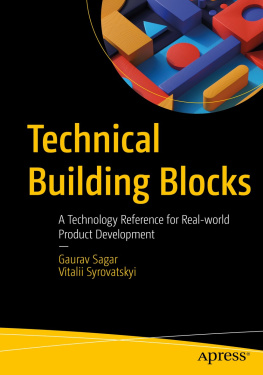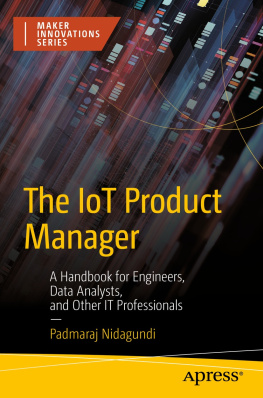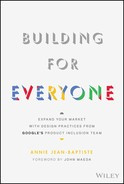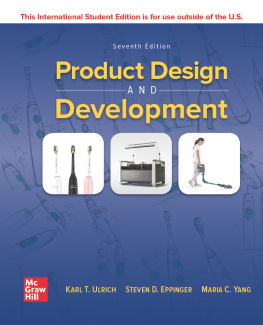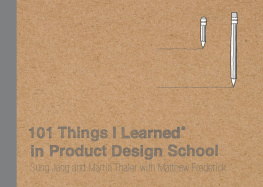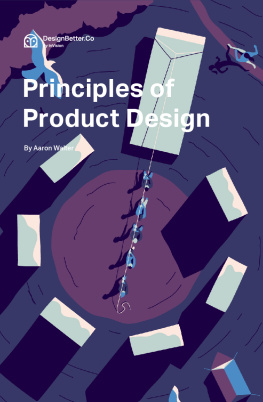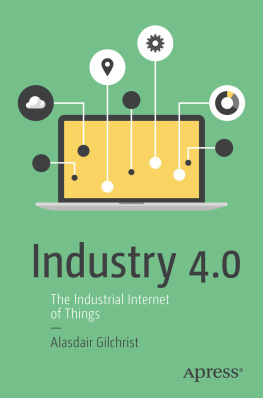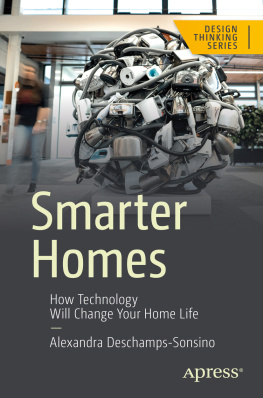
Table of Contents
List of Tables
- Chapter 4
- Chapter 5
List of Illustrations
- Chapter 1
- Chapter 2
- Chapter 3
- Chapter 4
- Chapter 5
- Chapter 6
Guide
Pages
IoT PRODUCT DESIGN AND DEVELOPMENT
Best Practices for Industrial, Consumer, and Business Applications
AHMAD FATTAHI
TIBCO Software Inc.
Palo Alto, CA, USA

This edition first published 2023
2023 John Wiley & Sons, Inc. All rights reserved.
No part of this publication may be reproduced, stored in a retrieval system, or transmitted, in any form or by any means, electronic, mechanical, photocopying, recording or otherwise, except as permitted by law. Advice on how to obtain permission to reuse material from this title is available at http://www.wiley.com/go/permissions.
The right of Ahmad Fattahi to be identified as the author of this work has been asserted in accordance with law.
Registered Office
John Wiley & Sons, Inc., 111 River Street, Hoboken, NJ 07030, USA
Editorial Office
111 River Street, Hoboken, NJ 07030, USA
For details of our global editorial offices, customer services, and more information about Wiley products visit us at www.wiley.com.
Wiley also publishes its books in a variety of electronic formats and by printondemand. Some content that appears in standard print versions of this book may not be available in other formats.
Limit of Liability/Disclaimer of Warranty
In view of ongoing research, equipment modifications, changes in governmental regulations, and the constant flow of information relating to the use of experimental reagents, equipment, and devices, the reader is urged to review and evaluate the information provided in the package insert or instructions for each chemical, piece of equipment, reagent, or device for, among other things, any changes in the instructions or indication of usage and for added warnings and precautions. While the publisher and authors have used their best efforts in preparing this work, they make no representations or warranties with respect to the accuracy or completeness of the contents of this work and specifically disclaim all warranties, including without limitation any implied warranties of merchantability or fitness for a particular purpose. No warranty may be created or extended by sales representatives, written sales materials or promotional statements for this work. The fact that an organization, website, or product is referred to in this work as a citation and/or potential source of further information does not mean that the publisher and authors endorse the information or services the organization, website, or product may provide or recommendations it may make. This work is sold with the understanding that the publisher is not engaged in rendering professional services. The advice and strategies contained herein may not be suitable for your situation. You should consult with a specialist where appropriate. Further, readers should be aware that websites listed in this work may have changed or disappeared between when this work was written and when it is read. Neither the publisher nor authors shall be liable for any loss of profit or any other commercial damages, including but not limited to special, incidental, consequential, or other damages.
Library of Congress CataloginginPublication Data
Names: Fattahi, Ahmad, author. | John Wiley & Sons, publisher.
Title: IoT product design and development : best practices for industrial, consumer, and business applications / Ahmad Fattahi.
Other titles: Internet of things product design and development Description: Hoboken, NJ : Wiley, 2022. | Includes bibliographical references and index.
Identifiers: LCCN 2022017971 (print) | LCCN 2022017972 (ebook) | ISBN 9781119787655 (cloth) | ISBN 9781119787679 (adobe pdf) | ISBN 9781119787662 (epub)
Subjects: LCSH: Internet of things. | Product design. | New products.
Classification: LCC TK5105.8857 .F384 2022 (print) | LCC TK5105.8857 (ebook) | DDC 004.67/8dc23/eng/20220606
LC record available at https://lccn.loc.gov/2022017971
LC ebook record available at https://lccn.loc.gov/2022017972
Cover Design: Dana Fattahi
Cover Images: Floaria Bicher/Getty Images, Henrik5000/Getty Images
To My Father
Acknowledgments
I lost my father to COVID19 during the process of writing this book. He was always the source of good and inspiration in my life. Leaving this world did not stop him from continuing to do so; his departure inspired me in a totally new way to plow ahead and hopefully help make the world a better place. Right next to him was my mother, brother, sister, and aunt who kept supporting me through the hardest days of 2021; thank you!
I've had the luxury of working with some of the best and brightest professionals in the IoT world. Richard Beeson has taught me a lot and helped me tremendously to reach where I am today. John Matranga continues to expose me to opportunities and insights that otherwise would be impossible. In fact, this book is a direct result of a joint presentation with him at Stanford University in 2019. I owe a lot to Brad Novic who is my great mentor and friend. He helped me learn about statistics and what it means to deliver value with data in a business environment. Sanjiv Patel welcomed me to Cisco and enabled me to grow in my career. His positive and growthminded attitude will stick with me forever. I have to thank my dear friend and former colleague Jog Mahal; whenever I ran into dead ends with the legal or the bureaucratic questions at Cisco, he quickly found a way out for me with a big smile on his face. Steve Cox encouraged me a lot and played a significant role in my decision to take up the project of writing this book; thank you! On top of all of the above Richard, Brad, and Sanjiv kindly accepted the role of the reviewers for the book despite their extremely busy schedules. I also have to thank my nephew, Dana Fattahi, who eagerly helped me with his artistic prowess and designed and improved many illustrations and the cover image of this book.
I could not have completed this book if not for the tremendous amount of knowledge from a few sources. The hosts of Stacey on IoT podcast, Stacey Higginbotham and Kevin Tofel, kept me up to date on everything IoT on a regular basis. I also learned a lot from Dave Sluiter who teaches IoT at University of Colorado Boulder. A big shoutout goes to the whole community behind Wikipedia; I don't know what I would have done without all of the resources in this precious public source of knowledge.
The Wiley team has always been a great support. From the early days of forming the skeleton of the book to the ongoing questions about the logistics, they were always anxious to help me out. I also appreciate them accommodating me during the difficult period after my father's passing.
Last but not least, I have to appreciate my wife and best friend's support and patience throughout this gruelling process. I had to forgo many events or keep working late at night or weekends for more than a year. She kept supporting me and inspiring me with her perennial smile on her face. Thank you Mahvash!
Preface
The Internet of Things (IoT) technology is expected to generate north of $10 trillion of value globally by 2030. If you touch the consumer or business IoT ecosystem in any shape or form, there may be something of interest in this book for you. One of the major challenges of designing and implementing an Internet of Things product or service is the intrinsic multidisciplinary nature of the topic. Most products in the field have to consider significant hardware, software, data science, data engineering, and cybersecurity elements. As an example of a consumer product, a smart lock needs to be built in a compact and energyefficient way. Some of the analytical algorithms happen on the device, while batch processes optimize larger pieces of analytics in the cloud. All such operations need to be safe and secure. The same story happens in enterprise and industrial use cases. A remote pressure sensor in the field needs to be designed to assure resilience in adverse conditions. All communication needs to happen in a secure way before IT executives give it a nod. And of course, it won't be of use if data cannot be collected at scale and fed into advanced data science algorithms.
Next page

